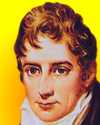
On 11 Feb 1809, Robert Fulton patented his steamboat for the first time in the U.S., although he had already made his first successful steamboat trip on the Clermont between New York City and Albany in 1807. Others had harnessed the power of steam on land, but he applied it for propulsion of water transport of passengers. He opened up American rivers for two-way trips.
Fulton's steamboat was one of the most important inventions of his era. To learn more about what was involved in the way of financing, politics and patent litigation, read The First Steamboat.

On 11 Feb 1898, Leo Szilard was born. Today's book pick is: Genius in the Shadows : A Biography of Leo Szilard : The Man Behind the Bomb, by William Lanouette. Szilard is known as a key contributor to the Manhattan project. The author delves into the intriguing details of the ambitions, obsessions, and fears of an intensely adventurous life, and yet an enigmatic personality. The title refers to the shadows that obscured this curious physicist that have been cast by the monuments of the atomic age his work catalyzed: the Cold War, nuclear power and such icons as Robert Oppenheimer. Szilard was at the epicenter of the Manhattan Project, yet remained isolated from celebrity. This book casts light on the physicist's career and character that you may barely have known before, yet feel you must know, since his work and its consequences was so profound.
It is available from Amazon, typically about New from $23.20. Used from $4.18. (As of earlier time of writing - subject to change.)
 | It is better to do the right problem the wrong way than the wrong problem the right way. |
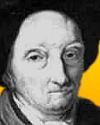 | Nature is never so admired as when she is understood. |
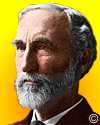 | A mathematician may say anything he pleases, but a physicist must be at least partially sane. |
| Before you look at today's web page, see if you can answer some of these questions about the events that happened on this day. Some of the names are very familiar. Others will likely stump you. Tickle your curiosity with these questions, then check your answers on today's web page. | |
| Births | |
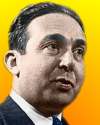 | Leo Szilard, born 11 Feb 1898, was a naturalised American physicist who, with Enrico Fermi, designed the first nuclear reactor that sustained nuclear chain reaction (2 Dec 1942). What was his nationality at birth? |
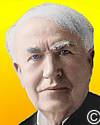 | An American inventor was born 11 Feb 1847, who, singly or jointly, held a world record 1,093 patents. In addition, he created the world's first industrial research laboratory. He showed an early curiosity for explanations of how everything worked and was especially interested in chemistry. He began selling newspapers on the railroad at age 12, and learned how to operate a telegraph. In 1868, his first invention was an electric vote-recorder. Can you name this inventor? |
| Deaths | |
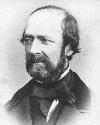 | Jean-Bernard-Léon Foucault (1819-1868) was a French physicist who introduced and helped develop a technique of measuring the absolute velocity of light with extreme accuracy. Also, a certain pendulum experiment is still known by his name What did his pendulum experiment prove? |
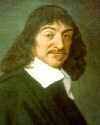 | René Descartes (1596-1650) was a French philosopher, who was the first to oppose scholastic Aristotelianism, which he began by methodically doubting knowledge based on authority, the senses, and reason. Hence, his most famous quote in “I think, therefore I am.” In what field is Descartes also remembered as a scientist? |
| Events | |
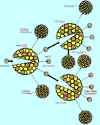 | On 11 Feb 1939, the journal Nature published a theoretical paper by Lise Meitner and Otto Fritsch, her nephew, explaining how, when a uranium nucleus was struck by neutrons, barium was produced. What term was coined in their paper for this phenomenon? |
Fast answers for the previous newsletter for February 10: John Bardeen and William B. Shockley • saccharin • Nobel Prize for Physics • Lord Joseph Lister • Niagara Falls, U.S. • haemophilia.
 If you enjoy this newsletter, the website, or wish to offer encouragement or ideas, please send feedback by using your mail reader Reply button.
If you enjoy this newsletter, the website, or wish to offer encouragement or ideas, please send feedback by using your mail reader Reply button. Your click on a Facebook, StumbleUpon, or other social button on the site webpages is also a welcome sign of appreciation. Thank you for using them.
© This newsletter is copyright 2020 by todayinsci.com. Please respect the Webmaster's wishes and do not put copies online of the Newsletter — or any Today in Science History webpage. (If you already have done so, please remove them. Thank you.) Offline use in education is encouraged such as a printout on a bulletin board, or projected for classroom viewing. Online, descriptive links to our pages are welcomed, as these will provide a reader with the most recent revisions, additions and/or corrections of a webpage. For any other copyright questions, please contact the Webmaster by using your mail reader Reply button.
--
If you do not want to receive any more newsletters, Unsubscribe
To update your preferences and to unsubscribe visit this link
Executive Real Estate Business Class
-
"It was like a man with wings. It wasn't like anything you'd see on TV or in a monster movie." ...
About the publisher
Search This Blog
Blog Archive
-
▼
2021
(585)
-
▼
February
(72)
- Mary Seacole | The Spitfire | George Washington
- On This Day for February 28 - Olof Palme assassina...
- On This Day for February 27 - Chile struck by eart...
- On This Day for February 26 - Napoleon's escape fr...
- On This Day for February 25 - Ousting of Marcos in...
- Demystified: How Do Penguins Tell Each Other Apart?
- On This Day for February 24 - U.S. President Andre...
- On This Day for February 23 - Alamo besieged by Sa...
- On This Day for February 22 - Cloning of Dolly, Ge...
- Your essential guide to the Tudors | LGBT+ history...
- On This Day for February 21 - Malcolm X assassinat...
- On This Day in History by OnThisDay.com: You are n...
- February 21: The 1st Romanov Tsar, the 1st Locomot...
- On This Day for February 20 - John Glenn's orbit o...
- On This Day for February 19 - Iwo Jima invaded by ...
- 🎉 Ready for 30% Off Kids' Memberships?
- On This Day for February 18 - Pluto discovered by ...
- Newsletter for Thursday 18 February.
- Demystified: Why Does Salt Melt Ice?
- On This Day for February 17 - Vietnam invaded by C...
- Newsletter for Wednesday 17 February.
- On This Day for February 16 - Power in Cuba seized...
- Newsletter for Tuesday 16 February.
- On This Day for February 15 - USS Maine destroyed,...
- Newsletter for Monday 15 February.
- February 15: The King of Persia, the Human Genome ...
- Who was Saint Valentine?
- On This Day for February 14 - Fatwa issued against...
- Newsletter for Sunday 14 February.
- February 14: Battle of Cape St Vincent, the Teleph...
- On This Day for February 13 - William and Mary cro...
- Newsletter for Saturday 13 February.
- February 13: Baghdad falls to the Mongols, the Bil...
- On This Day for February 12 - Chile's independence...
- Newsletter for Friday 12 February.
- February 12: The Qing Dynasty Ends, The Senate Acq...
- Demystified: Why Do We Say “A Pair of Pants”?
- On This Day for February 11 - St. Bernadette's fir...
- Newsletter for Thursday 11 February.
- February 11: Margaret Thatcher's Rise to Power, Ne...
- Watch ‘Tuskegee Airmen: Legacy of Courage’
- 🇺🇸💰Your Presidents' Day Exclusive Bonus!
- On This Day for February 10 - Kasparov-versus-comp...
- Newsletter for Wednesday 10 February.
- February 10: End of the French-Indian War, HMS Dre...
- All-New Tonight: 'The Food That Built America' Sne...
- On This Day for February 9 - Calcutta restored to ...
- Newsletter for Tuesday 9 February.
- February 9: Massachusetts Rebels, the Battle of Gu...
- On This Day for February 8 - Mary, Queen of Scots,...
- Newsletter for Monday 8 February.
- February 8: Mary Stuart is Decapitated, Napoleon L...
- What did Mary Tudor think of Anne Boleyn and her o...
- On This Day for February 7 - British Invasion laun...
- Newsletter for Sunday 7 February.
- February 7: The 1st English Prince of Wales, the M...
- Newsletter for Saturday 6 February.
- On This Day for February 6 - Accession of Elizabet...
- February 6: Maximilian I and Elizabeth II Ascend t...
- Black History Month: The Tuskegee Airmen Documenta...
- On This Day for February 5 - Punic Wars ended, Han...
- February 5: Congo Taken as a Personal Possession a...
- On This Day for February 4 - Yalta Conference open...
- February 4: The Chinese Song Dynasty, World's Olde...
- Serving Up an All-New Season
- On This Day for February 3 - Fifteenth Amendment t...
- February 3: The Naval Battle of Diu, Universal Suf...
- On This Day for February 2 - Ban on African Nation...
- February 2: New Amsterdam Grows Up, the US Pays Me...
- On This Day for February 1 - Space shuttle Columbi...
- Newsletter for Monday 1 February.
- February 1: Black History Month Starts and a Day o...
-
▼
February
(72)
-
Blogroll
-
About
HistoryFact










0 comments:
Post a Comment